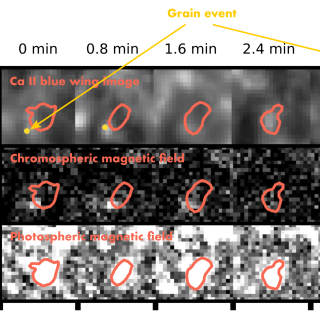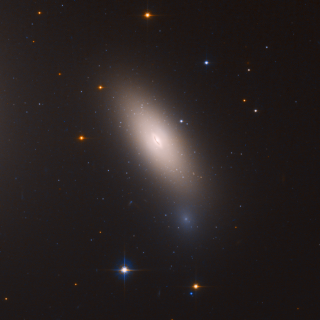It may interest you
-

CaII Kgrains, i.e., intermittent, short-lived (about 1 minute), periodic (2-4 minutes), pointlike chromospheric brightenings, are considered to be the manifestations of acoustic waves propagating upward from the solar surface and developing into shocks in the chromosphere. After the simulations of Carlsson and Stein, we know that hot shocked gas moving upward interacting with the downflowing chromospheric gas (falling down after having been displaced upward by a previous shock) nicely reproduces the spectral features of the CaII K profiles observed in such grains, i.e., a narrowband emission
Advertised on -

The standard cosmological model states that massive galaxies contain a large fraction of dark matter. Dark matter is a transparent substance that does not interact through regular baryonic matter and is only detected through its gravitational pull over the stars and the gas. NGC 1277 is known as the prototype of a relic galaxy, that is, a galaxy that has not accreted other galaxies since it formed. Relic galaxies are extremely rare and are the untouched remains of the giant galaxies that populated the early Universe. Since relic galaxies are very important to understand the conditions in the
Advertised on -

Dark matter is an invisible substance that makes up more than eighty percent of the matter content of the universe. We know of its existence due to its gravitational influence, being a key ingredient to understand everything from the large-scale evolution of the universe to the formation of galaxies like the Milky Way, of which we are part of . However, very little is known about its nature, which constitutes one of the greatest unsolved problems in contemporary physics. The fuzzy dark matter model has recently been studied as a promising candidate. In this model , it is postulated that dark
Advertised on
